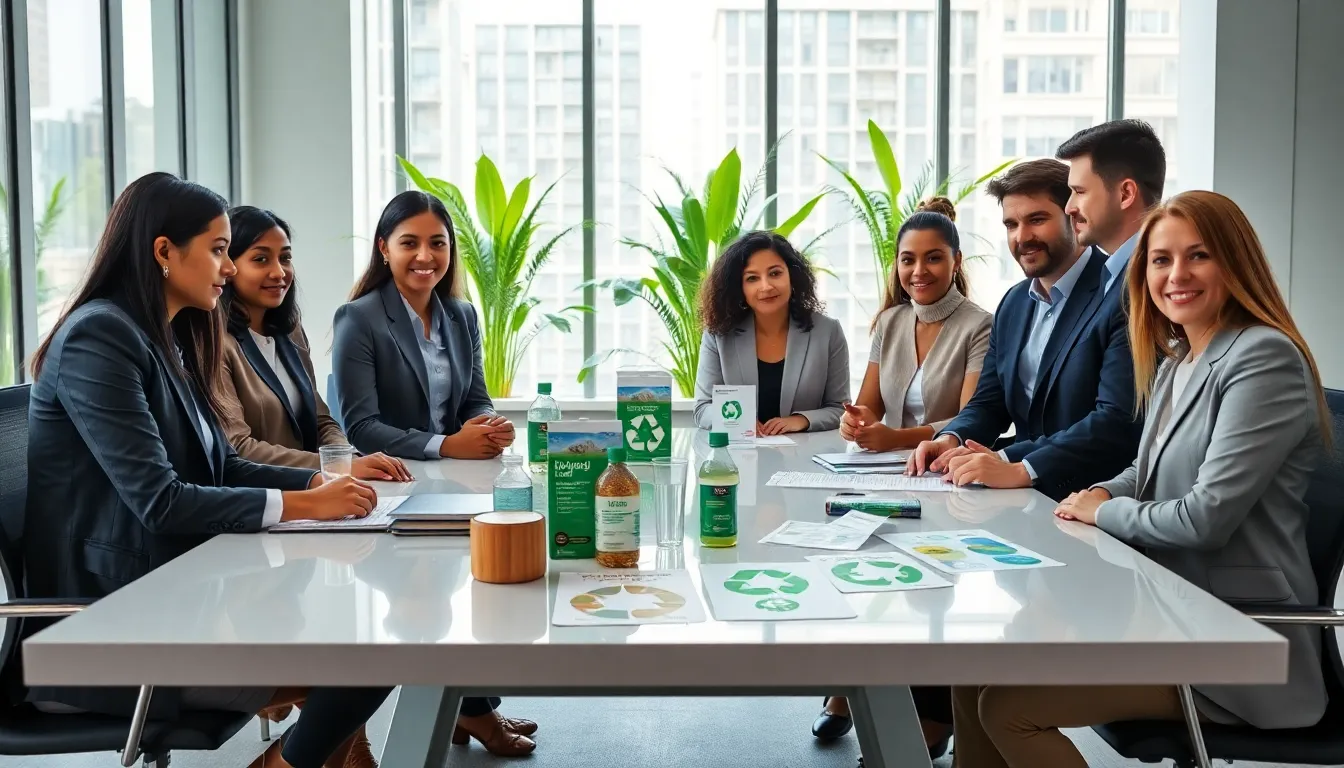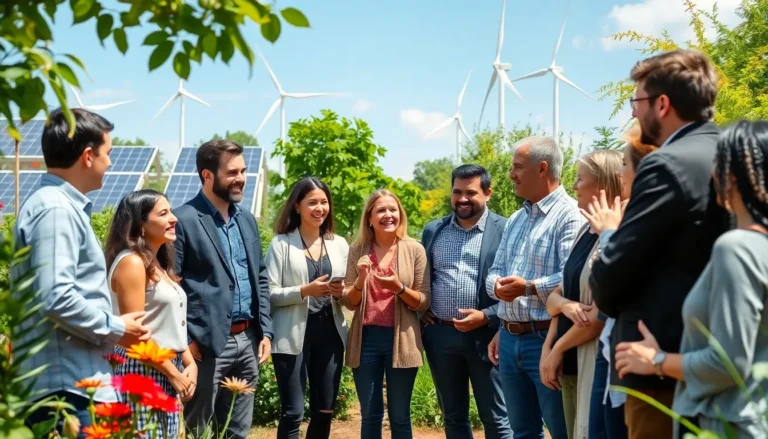Picture this: a world where your choices not only protect the planet, but also save you money and create happier communities. Sounds like a dream, right? Well, welcome to the realm of sustainable living. As we jump into the profound impacts it has on our environment, economy, and society, you may discover that going green is more than just a trend, it’s a lifestyle choice that pays off in spades. This journey towards sustainability might even lead to a few chuckles, as we explore the serious side of saving the Earth while keeping our sense of humor intact.
Table of Contents
ToggleUnderstanding Sustainable Living

Sustainable living revolves around reducing the consumption of Earth’s resources while minimizing environmental impact. This idea isn’t just the brainchild of a few earth-loving hippies. It’s a necessary approach in a world where populations are booming and resources are finite. At its core, sustainable living encourages individuals and communities to engage in practices that promote ecological health, economic viability, and social equity. From reducing waste and recycling, to being conscious of energy consumption, sustainable living encompasses a wide range of activities. Knowing what sustainable living entails is the first step toward making impactful changes.
Environmental Benefits of Sustainable Living
One of the most significant impacts of sustainable living is its positive influence on the environment. When individuals adopt sustainable practices, they help lower carbon footprints and decrease pollution levels. For example, utilizing public transport, biking, or walking instead of driving helps reduce greenhouse gas emissions. Besides, sustainable living promotes the use of renewable energy sources, such as solar or wind power, which contribute to cleaner air and water.
Also, sustainable agriculture practices enhance biodiversity. Organic farming techniques, like crop rotation and reduced pesticide usage, help preserve natural habitats. As these practices gain traction, they contribute to healthier ecosystems that benefit not just humans but also wildlife.
In essence, sustainable living is akin to giving Mother Earth a big hug, one that lasts.
Economic Impact of Sustainable Living
Beyond the environmental perks, sustainable living also has tangible economic benefits. When people invest in sustainable products, such as energy-efficient appliances or organic foods, they not only support eco-friendly businesses but also save money in the long run. For instance, energy-efficient appliances might have higher upfront costs, but they significantly lower utility bills due to their efficient energy use.
Also, sustainability can lead to job creation in green industries. The shift towards renewable energy sources fuels the need for skilled workers, meaning thousands of new jobs can emerge in solar installation, wind farm development, and sustainable product manufacturing. This transition not only boosts the economy but also fosters a sense of community as more local businesses thrive by promoting eco-friendly practices.
Social Implications of Sustainable Living
The social implications of sustainable living extend far beyond the individual. Embracing sustainability can improve quality of life, particularly in urban communities. Green spaces in cities enhance mental well-being, providing residents with areas to relax, socialize, and engage in physical activity. Besides, sustainable practices often engender cooperation among community members. For example, community gardens not only provide fresh produce but also strengthen social bonds and promote inclusivity among diverse populations.
Also, sustainable living prioritizes social equity by advocating for fair trade and ethical consumption. This focus on social justice ensures that the benefits of sustainability, clean environments, healthy food, and fair wages, are accessible to everyone, not just a select few.
Challenges to Embracing Sustainable Living
While the merits of sustainable living are manifold, obstacles still exist. One significant challenge is the mindset surrounding consumerism. In a society that constantly promotes instant gratification, adopting sustainable habits can feel like an uphill battle. Many individuals find it challenging to view sustainability as a priority over convenience. For example, opting for locally sourced produce may require more effort than grabbing a quick meal from a fast-food joint.
Also, the lack of infrastructure in certain areas can hinder individuals from pursuing sustainable lifestyles. Without access to recycling facilities or public transportation, embracing green practices can prove difficult. Also, misinformation about what sustainable living truly involves can lead to confusion and skepticism, making individuals reluctant to embark on this journey towards eco-friendliness.
Practical Steps to Achieve Sustainable Living
Achieving sustainable living might seem daunting, but small, consistent actions can lead to significant changes. Begin by assessing daily habits. Are you recycling appropriately? Consider swapping single-use plastics for reusable alternatives like water bottles and grocery bags. Every little change adds up.
Next, focus on what you consume. Supporting local farmers not only boosts the economy but also reduces the carbon footprint associated with transporting food. Also, consider reducing meat consumption. Meat farming is resource-intensive: even a few meat-free days a week can make a substantial difference.
Finally, energy conservation at home can significantly contribute to sustainability. Simple changes, such as switching off lights, unplugging devices when not in use, and using energy-efficient appliances, can lead to noticeable savings on utility bills and environmental impact.






